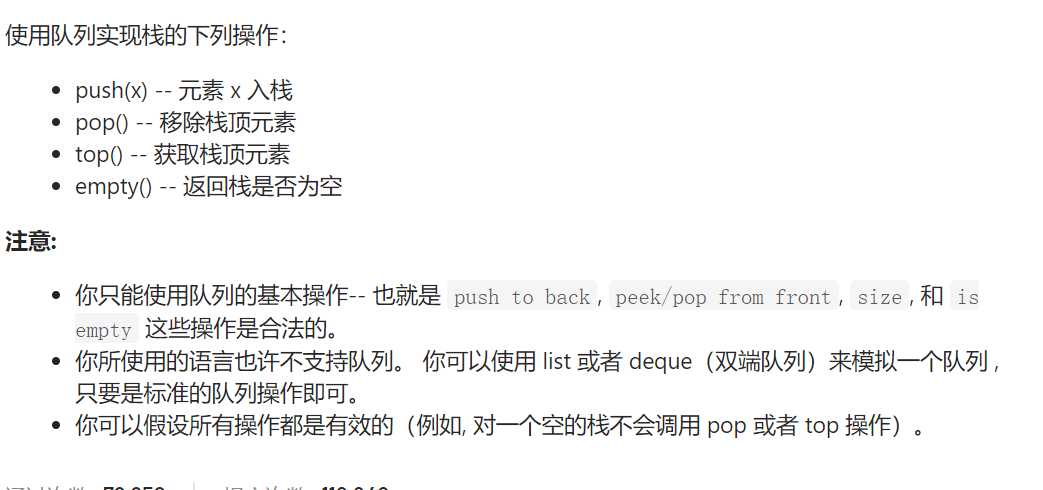------------恢复内容开始------------

思路:主要是把先进先出变成先进后出,最简单的思路就是每次进去一个元素,把队列里面存在的元素全部给放到这个元素的后面去,让这个元素在队伍首。
这题主要是让我学习了一下java的queue的类,之前一直没有用过java的类。
来个廖雪峰的java学习:https://www.liaoxuefeng.com/wiki/1252599548343744/1265121791832960
然后自己的代码:
import java.util.Queue; class MyStack { private Queue<Integer> queue; /** Initialize your data structure here. */ public MyStack() { queue = new LinkedList<>(); } /** Push element x onto stack. */ public void push(int x) { queue.offer(x); for (int i=queue.size()-1;i>0;i--) { queue.offer(queue.poll());//将插入元素前面的元素都放到这个元素后面去 } } /** Removes the element on top of the stack and returns that element. */ public int pop() { return queue.poll(); } /** Get the top element. */ public int top() { return queue.peek(); } /** Returns whether the stack is empty. */ public boolean empty() { return queue.isEmpty(); } } /** * Your MyStack object will be instantiated and called as such: * MyStack obj = new MyStack(); * obj.push(x); * int param_2 = obj.pop(); * int param_3 = obj.top(); * boolean param_4 = obj.empty(); */
专家的题解:
class MyStack { private Queue<Integer> queue; /** Initialize your data structure here. */ public MyStack() { queue = new LinkedList<>(); } /** Push element x onto stack. */ public void push(int x) { queue.offer(x); for (int i = queue.size() - 1; i > 0; i--) { queue.offer(queue.poll()); } } /** Removes the element on top of the stack and returns that element. */ public int pop() { return queue.poll(); } /** Get the top element. */ public int top() { return queue.peek(); } /** Returns whether the stack is empty. */ public boolean empty() { return queue.isEmpty(); } }
------------恢复内容结束------------
原文:https://www.cnblogs.com/William-xh/p/13673969.html